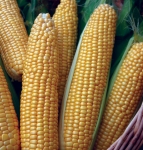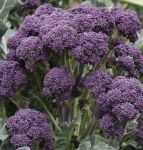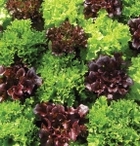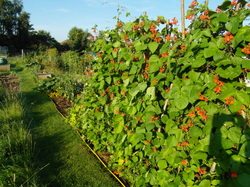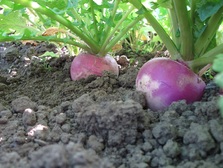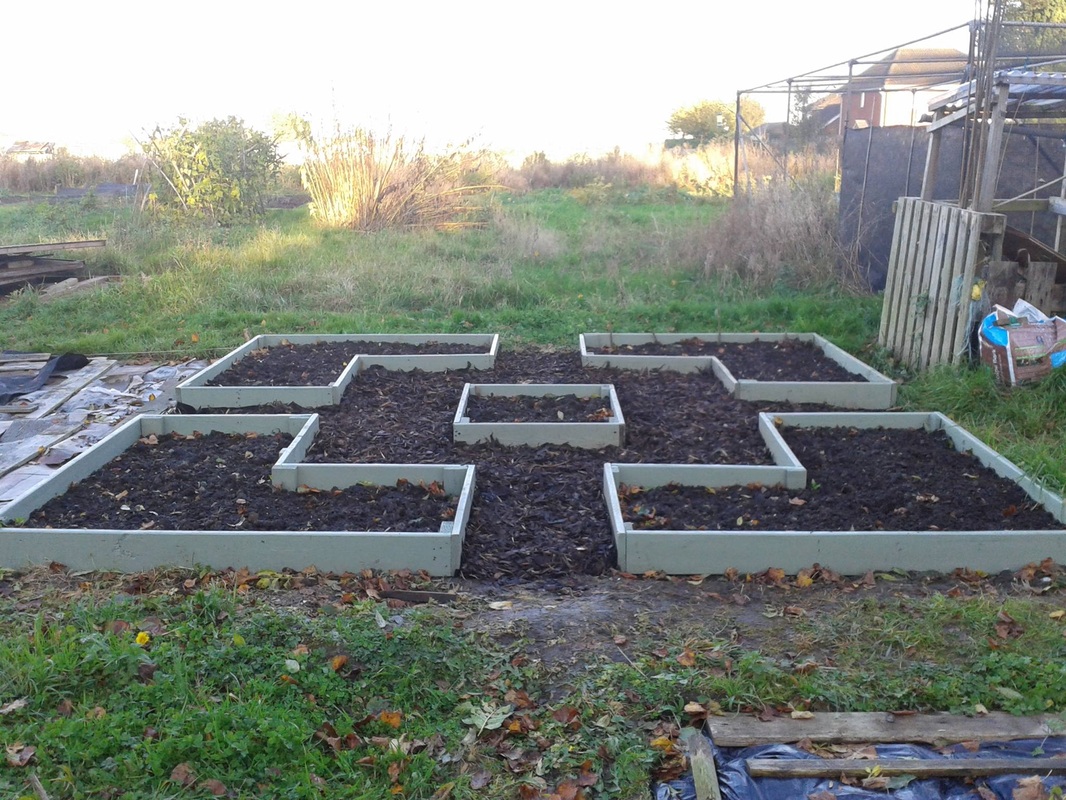Once upon a time, allotments were HUGE! Now, like bars of chocolate, they have shrunk. If you were expecting to get a 1940s size plot, big enough to keep chickens on and grow all the fruit and veg for a family of 5, a 21st century plot will seem distinctly bijou . . .
In the heyday of allotments in the early-to-mid twentieth century, fresh vegetables were expensive and incomes were lower than we can imagine. Many people who lived in towns had serious health problems as a result of being unable to afford fruit or vegetables regularly. Growing your own wasn't a hobby, it was a necessity for health. Now, with fresh vegetables reasonably priced and incomes - even for the worst off - higher than they used to be, your allotment can be a source of luxuries rather than necessities.
ABOVE: from the left, sweet corn, purple sprouting broccoli, pattypan squash and oak-leaf lettuce. All from Seeds of Distinction (click on the pic for links)
CHOOSE WHAT YOU GROW WITH CARE
If you have limited space, it doesn't make sense to put a third of it down to potatoes, as our grandfathers did. Onions and carrots are very cheap - growing your own only makes sense if you've plenty of space. Cabbage is nice but not, well, a luxury, eh? Concentrate on vegetables which are either very expensive to buy (runner beans, for example), deteriorate very rapidly once picked (like sweet corn) or both (asparagus!).
Here is our list of some the best value vegetables to grow when space is limited.
If you have limited space, it doesn't make sense to put a third of it down to potatoes, as our grandfathers did. Onions and carrots are very cheap - growing your own only makes sense if you've plenty of space. Cabbage is nice but not, well, a luxury, eh? Concentrate on vegetables which are either very expensive to buy (runner beans, for example), deteriorate very rapidly once picked (like sweet corn) or both (asparagus!).
Here is our list of some the best value vegetables to grow when space is limited.
- Asparagus: even quite a small patch will yield enough spears to treat yourselves. You do need to prepare the ground properly and it takes a while to get going, but it's worth the wait!
- Beetroot give a good yield from a tiny row. Good hot, cold, or even fashionably raw, get the best value for space by planting a long thin variety like 'Cylindrica'
- Courgettes and squash: these beefy plants need a square metre of ground each - don't skimp them - but just one plant will keep you supplied with an amazing quantity of luxury veg. Courgettes are familiar, but just as easy to grow and with a better flavour are the patty-pan squash (see photo below) available in yellow or green.
- Cucumbers: outdoor varieties today cucumbers as good as anything you could grow in a greenhouse. Look out for variety 'Burpless Tasty Green'.
- French Beans: a high yield from a tiny area - definitely a must.
- Peas: they take up a bit of space but the flavour is unmatchable. Don't bother freezing them (the professionals do it better) but just fit in a short row as a midsummer treat.
- Potatoes: don't bother with 'ordinary' spuds. But it's worth putting aside a small space for some earky new potatoes. You can get a good crop from a small area by providing a raised container (see below).
- Purple sprouting Broccoli: a 'cut and come again' vegetable that has become very fashionable. Three or four plants will give you enough to enjoy.
|
Clever tricks to make the most of your space!
|
The way you use your ground can have a big effect on how much you can grow in it. This picture shows an attractive space, but look how much of the space is devoted to paths! However, having no permanent paths means you are forever walking on the soil between the rows. A happy medium is to divide the plot up into a series of narrow beds, each as long as the shortest axis of the plot. Leave only the narrowest paths. raising the edges of the beds with boards helps increase soil depth.
|
Raising some areas increases the soil depth and means plants can be spaced closer together. Some plants do especially well in raised beds: the courgette family, radishes and trunips, many salads. You can get an enormous crop of new potatoes from a tiny space by growing them in a bag. Click here for a useful video on how to do it. Use either an old compost bag turned inside out, or for a really bumper crop, one of those bulk bags builders' supplies are delivered in. In fact, bulk bags make marvelous easily-constructed raised beds! Turn down the top so you get a double layer of fabric on the outside and fill with compost.
You can even do a better trick with bulk bags. Use one as a compost heap, with the top up to full height. Fill it all summer with all your garden waste (anything can go in, even weeds, but not just grass clippings on their own) and the early part of the winter. At Christmas, cover the top with old compost sacks to keep everything snug and stop anything growing.
In the spring, level off the contents and firm them well down. Cover with a 6" thick layer of soil or bagged compost, and fold down the outside to just above the level of the soil inside. Plant 4 courgette, squash or cucumber plants at the corners. They will root into your compost heap, spill attractively down the edges, and be at a comfortable height to pick. By the autumn, when you take the plants out, the compost inside will have rotted down quite a lot.
Once cleaned of the courgette and squash plants, fold the top down further to take account of the rotting down, and add a little more soil or bagged compost on top, and mix in some general purpose fertiliser like pelleted chicken manure. Sow with winter salads, spring onions and maybe some herbs. In March add some more lettuce seeds and some radishes.
Meanwhile, on a sunny windowsill, have some climbing french beans or runner beans growing on in little pots. In late May, take out the last of the overwintering and spring salads and tidy the soil up. Add some more fertiliser, slot canes into the perimeter, tie them in the middle to make a wigwam, and plant out your beans. They will love the moist, squishy compost and give you a good crop.
Once the beans have finished, tip out all the contents and use to mulch or dig into your soil!
You can even do a better trick with bulk bags. Use one as a compost heap, with the top up to full height. Fill it all summer with all your garden waste (anything can go in, even weeds, but not just grass clippings on their own) and the early part of the winter. At Christmas, cover the top with old compost sacks to keep everything snug and stop anything growing.
In the spring, level off the contents and firm them well down. Cover with a 6" thick layer of soil or bagged compost, and fold down the outside to just above the level of the soil inside. Plant 4 courgette, squash or cucumber plants at the corners. They will root into your compost heap, spill attractively down the edges, and be at a comfortable height to pick. By the autumn, when you take the plants out, the compost inside will have rotted down quite a lot.
Once cleaned of the courgette and squash plants, fold the top down further to take account of the rotting down, and add a little more soil or bagged compost on top, and mix in some general purpose fertiliser like pelleted chicken manure. Sow with winter salads, spring onions and maybe some herbs. In March add some more lettuce seeds and some radishes.
Meanwhile, on a sunny windowsill, have some climbing french beans or runner beans growing on in little pots. In late May, take out the last of the overwintering and spring salads and tidy the soil up. Add some more fertiliser, slot canes into the perimeter, tie them in the middle to make a wigwam, and plant out your beans. They will love the moist, squishy compost and give you a good crop.
Once the beans have finished, tip out all the contents and use to mulch or dig into your soil!

